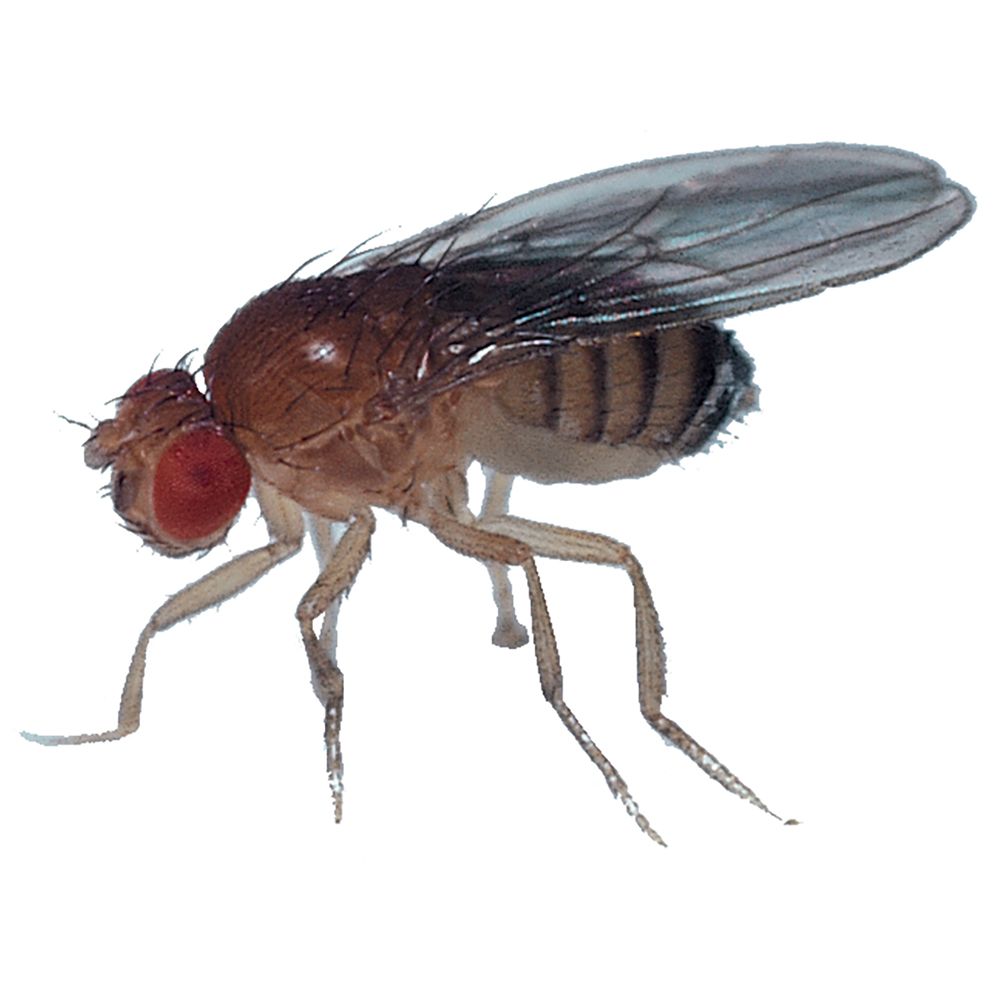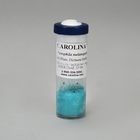Linkage Determination with Drosophila

Carolina Labsheets™
In this lab students use the Drosophila stock Curly/Plum; Dichaete/Stubble to determine which chromosome an “unknown” mutation is located upon. They also determine whether the unknown mutation is dominant or recessive, and whether it is autosomal or sex-linked.
This is an advanced lab. Students should be familiar with Drosophila work, including sexing, collecting virgins, and setting up crosses. Students should have been introduced to the concepts of dominant and recessive genes, sexlinked traits, linkage, and homologous chromosomes.
Needed Materials*
Curly/Plum; Dichaete/Stubble Drosophila cultures (172750)
Drosophila stock cultures for “unknown” mutants*
Wild-type Drosophila cultures (172100)
empty culture vials and plugs (173076)
Formula 4-24 Instant Drosophila Medium (173200 or 173210)
FlyNap® Kit (173010 or 173015)
alcohol
Drosophila sorting brushes (173094)
index cards to use as sorting trays
*Because the Cy/Pm; D/Sb stock also carries the recessive dumpy and black alleles, other stocks with the dumpy and black alleles should not be used for this lab. If you select a recessive sex-linked mutation, its location will be apparent after the first cross; therefore, we suggest that you test at least one more unknown of a different type for the full experience.
Optional Materials
Our Drosophila linkage determination set (171938) includes the following five cultures:
1) Curly/Plum; Dichaete/Stubble, 2) white, 3) Lobe, 4) sepia, and 5) eyeless.
Our Drosophila Culture Kit (173050) includes 36 vials and plugs, labels, a FlyNap® Kit, Formula 4-24® medium, sorting brushes, sorting cards, and a Carolina Drosophila Manual. One morgue is included in the Flynap Kit.
FlyNap is restricted to schools and businesses. For home use, we recommend the Carbon Dioxide Anesthetizer (173034).
Use of Carolina Drosophila Stands (173030) makes anesthetizing flies simple and convenient.
Safety
Ensure that students understand and adhere to safe laboratory practices when performing any activity in the classroom or lab. Demonstrate the protocol for correctly using the instruments and materials necessary to complete the activities, and emphasize the importance of proper usage. Use personal protective equipment such as safety glasses or goggles, gloves, and aprons when appropriate. Model proper laboratory safety practices for your students and require them to adhere to all laboratory safety rules.
Procedures
Students may work individually or in groups of 2–4.
Plan to receive your flies about 1 week before the first lab session. Each culture vial can be used to set up two to three crosses.
When your cultures arrive, open the package immediately and inspect the cultures to verify that they have arrived in good condition. Our vials are labeled with the genotype and chromosome number, so you may wish to black out or relabel the unknown mutant vials.
In this activity, students set up F1 and F2 crosses and examine their progeny. This will require three lab sessions: 1) to examine the parental phenotypes and set up the F1 cross, 2) to examine the F1 progeny and set up the F2 cross, and 3) to examine the F2 progeny. Because Drosophila require 12–14 days to mature, allow 2–3 weeks between labs. Do not use crosses more than 21 days after their initial setup date.
This activity assumes that students are familiar with Drosophila sexing and virgin collection. To set up the vials for virgin collection, clear (remove) all adults out of the appropriate vials 8–12 hours before the first and second lab sessions.
Either prepare a vial with media for each student group before sessions 1 and 2, or provide materials and instructions so that students can prepare their own vials. Materials needed are culture vials with plugs and Formula 4-24 Instant Drosophila medium.
Either prepare fly morgues with alcohol (one morgue is included in each FlyNap kit), or provide materials and instructions so that students can prepare morgues.
Session 1: Observing Phenotypes and Setting Up F1 Cultures
Eight to 12 hours before the lab, clear all adults out of the unknown mutant vials.
Set up additional stock vials of the unknown mutant and wild-type flies at the same time as this lab, so that there will be sufficient flies available in 2–3 weeks for the F2 crosses in lab Session 2.
Students will need the following materials:
Curly/Plum; Dichaete/Stubble Drosophila culture
unknown mutant Drosophila culture
wild-type Drosophila culture (for comparison of phenotypes only)
culture vials prepared with media and plugs
vial labels or china markers
Flynap® Kit, carbon dioxide, or other means of anesthetizing flies
sorting brush
index cards to use as sorting trays
stereomicroscope
Session 2: Characterizing F1 Phenotypes and Setting Up F2 Cultures
Eight to 12 hours before the lab, clear all adults out of the unknown mutant and wild-type vials.
Students will need the same materials as in the first lab session, as well as the F1 vials set up in the first lab session and two colors of pens or markers.
Session 3: Characterizing F2 Phenotypes and Determining Chromosomes
Students will need the following materials:
F2 vials set up during session 2
Flynap kit, carbon dioxide, or other method to anesthetize flies
sorting brush
index cards to use as sorting trays
stereomicroscope
Optional: This activity may be combined with linkage mapping using the Two-Point Linkage with Drosophila LabSheet or the Three-Point Linkage with Drosophila LabSheet. We offer F1 crosses for faster study of two-point linkage (172050, yellow white) or three-point linkage (172051, black vestigial brown).
Answer Key to Questions Asked on the Student LabSheet
Session 1: Observing Parental Phenotypes and Setting Up F1 Cultures
| Mutation | Description of phenotypic trait |
| Unknown stock | Varies |
| Curly (wing) | Wings curl up |
| Plum (eye) | Eye color more orange/brown than wild type |
| Dichaete (wing) | Wings held out at an angle |
| Stubble (bristles) | Bristles short and thick |
| Allele type | Will the unknown mutation be visible in F1 males? | Will the unknown mutation be visible in F1 females? |
| Dominant and autosomal | Yes | Yes |
| Dominant and sex-linked | Yes | Yes |
| Recessive and autosomal | No | No |
| Recessive and sex-linked | Yes | Yes |
Session 2: Characterizing F1 Phenotypes and Setting Up F2 Cultures
- Is the unknown mutation visible?
That depends on the unknown; the mutation will be visible if it is either dominant or a sex-linked recessive.
Look back at the chart you completed on day 1. What does this tell you about the nature of the unknown mutation?
That depends on the unknown.
Can you tell at this point which chromosome the mutation is on? If so, which is it?
If the unknown is recessive and sex-linked, yes, it is on Chromosome 1 (the X chromosome); otherwise, it is too soon to tell. - Why do you not see flies with both Curly and Plum, both Dichaete and Stubble, or all wild-type traits?
Curly and Plum and Dichaete and Stubble are on opposing chromosome homologs, so the F1 flies will have received one or the other, but not both, since they get one homolog from each parent. Similarly, since they must have received one of the two marked homologs, and those traits are dominant, there will be no flies that are wild type for all markers. - Which marker phenotype did you select?
That depends on the unknown; it should be one of Curly and Dichaete, Curly and Stubble, Plum and Dichaete, or Plum and Stubble. Both of the traits should affect different parts of the fly than the unknown mutation does. - Write down the genotypes of the males and females you have chosen to use for this cross. Use m for the unknown mutant.
For a dominant unknown, using Curly and Stubble as an example:
Female m+/m+, Cy+/Cy+, Sb+/Sb+ x Male m/m+, Cy/Cy+, Sb/Sb+
For a recessive unknown, using Curly and Stubble as an example:
Female m/m, Cy+/Cy+, Sb+/Sb+ x Male m/m+, Cy/Cy+, Sb/Sb+ - Draw the chromosomes of the female and male flies you are using in this cross and their predicted offspring. Use a different color for each parent and include the marker genes you have chosen.
Although you do not yet know the location of the unknown mutation, draw a star beside the homologs that might possibly include the mutant allele, in the parent(s) and offspring.
Example for a dominant unknown using Curly and Stubble:

Example for a recessive unknown using Curly and Stubble:

(The X chromosomes are not starred, because a recessive sex-linked mutation was already detected or eliminated in session 2.) - Could the mutant allele of the unknown gene be on the same homolog as one of the dominant marker alleles? Why or why not?
No, because it came from a separate stock in the first cross, and the marker chromosomes carry inversions that prevent recombination.
Session 3: Characterizing F2 Phenotypes and Determining Chromosomes
- List the possible F2 genotypes and phenotypes of the cross that you set up on day 2, including both the markers and the unknown mutation. Remember what you have already determined about the unknown mutant’s dominance or recessivity.
Dominant unknown, example answers using Curly and Stubble:
Genotype Phenotype m+/m+, Cy+/Cy+, Sb+/Sb+ All wild type m+/m+, Cy/Cy+, Sb+/Sb+ Curly wings; other traits wild type m+/m+, Cy+/Cy+, Sb/Sb+ Stubble bristles; other traits wild type m+/m+, Cy/Cy+, Sb/Sb+ Curly and Stubble; unknown mutant is wild type m/m+, Cy+/Cy+, Sb+/Sb+ Unknown mutant visible; other traits wild type m/m+, Cy/Cy+, Sb+/Sb+ Unknown mutant visible; Curly wings; Stubble is wild type m/m+, Cy+/Cy+, Sb/Sb+ Unknown mutant visible; Stubble visible; Curly is wild type m/m+, Cy/Cy+, Sb/Sb+ Unknown mutant, Curly, and Stubble all visible
Recessive unknown, example answers using Curly and Stubble:
Genotype Phenotype m/m+, Cy+/Cy+, Sb+/Sb+ All wild type m/m+, Cy/Cy+, Sb+/Sb+ Curly wings; other traits wild type m/m+, Cy+/Cy+, Sb/Sb+ Stubble bristles; other traits wild type m/m+, Cy/Cy+, Sb/Sb+ Curly and Stubble; unknown mutant is wild type m/m, Cy+/Cy+, Sb+/Sb+ Unknown mutant visible; other traits wild type m/m, Cy/Cy+, Sb+/Sb+ Unknown mutant visible; Curly wings; Stubble is wild type m/m, Cy+/Cy+, Sb/Sb+ Unknown mutant visible; Stubble visible; Curly is wild type m/m, Cy/Cy+, Sb/Sb+ Unknown mutant, Curly, and Stubble all visible - Does the unknown mutation occur in both sexes? What does this tell you about its location?
That depends on the unknown. If the answer is yes, the gene must be autosomal; if no, it appears in the females and must be on the X chromosome.
Do you see all of the phenotypes you listed above? If not, which are missing?
That depends on the unknown. - Which chromosome contains the unknown mutant gene?
If none of the flies with Chromosome 2 markers (Cy or Pm) also displays the mutation, then the gene must be on Chromosome 2.
If none of the flies with Chromosome 3 markers (D or Sb) also displays the mutation, then the gene must be on Chromosome
If the unknown mutation assorts independently from both markers and occurs in both sexes, then the gene must be on Chromosome 4.



